|
This narrative reports fractions a/b rather than the modern LaTeX fraction form.
Prior to 2050 BCE Old Kingdom Egyptians threw away 1/64 units within a 6-term binary notation system. The cursive system was named Horus-Eye and was recorded in rational numbers following this example:
1 = 1/2 + 1/4 + 1/8 + 1/16 + 1/32 + 1/64 + ...
A 1/64 term was generally thrown way.
After 2050 BCE an exact finite numeration system replaced the Old Kingdom's missing 1/64 units in weights and measures systems. The Middle Kingdom finite system "healed" the rounded off binary series by writing with several methods, one was:
1 = 1/2 + 1/4 + 1/16 + 1/32 + 1/64 + 5 ro
another,
1 = 1/2 + 1/4 + 1/16 + 1/32 + 10 ro.
The hieratic word ro meant 1/320 of a hekat in a grain weights and measures system. Note that 5 ro meant 5/320 = 1/64.
At other times 2/64 was scaled to 10/320 such that (8 + 2)/320 = 1/40 + 1/160 allowed
1 = 1/2 + 1/4 + 1/16 + 1/32 + 1/40 + 1/160
The new finite numeration system generally scaled rational numbers to optimized, but not optimal, unit fraction series. The 1900 BCE Akhmim Wooden Tablet (AWT) scaled two volume units into the Egyptian fraction notation in a manner that allows scholars to open a long lost closed book on the foundations of Egyptian fraction mathematics.
The AWT divided (64/64), a hekat unity, by 3, 7, 10, 11 and 13 writing exact binary quotients and (5/5) scaled remainders into 1/320 unit fraction series. Each answer was proven by multiplying by the divisor returning (64/64) the initial hekat unity.
The AWT methodology documented the solution to an Old Kingdom binary round-off problem/ Ahmes used the AWT method over 40 times, scaling a 1/10 hin unit to 1/320 ro unit 29 times, as well as solving several classes of problems.
Middle Kingdom (MK) scribes scaled rational numbers to unit fraction series by a least common multiple (LCM) creating a numeration system in the AWT and other hieratic texts. The Egyptian fraction numeration system ciphered counting numbers 1:1 onto hieratic sound symbols replacing an Old Kingdom hieroglyphic many-to-one system numbers written in rounded-off binary numbers. A line was drawn over hieratic sound symbols to denote unit fractions. Carl B. Boyer reported the significance of the ciphered numeration system. Egyptian fraction series represented rational numbers in ordered unit fraction series, writing the smallest to the largest unit fraction, from left to right.
One purpose of the Egyptian fraction system involved a finite weights and measures system applied to a commodity based monetary system established by Pharaoh. One theoretical aspect of the monetary system contained Egyptian multiplication and division operations. The scribal arithmetic was undervalued by historians for over 120 years, from 1879 to 1999, by only reporting the additive aspects of the raw transliterated data.
Scribal unit fraction answers contained two sides, additive numerators, and LCM scaled reminders. Math historians, beginning with F. Hultsch in 1895, parsed aspects of the scribal aliquot part views of numerators and LCM denominators, though the unified aspects of the system remained vague for another 105 years. In 2002, the EMLR was validated containing aliquot parts of LCM denominators in an un-optimized manner. The LCM (m/m) was written as a unity becoming a multiplier that scribes used to scale rational numbers to optimized, but not optimal, unit fraction series in 2/n table tables and every day problem and answers. In 2006 the Akhmim Wooden Tablet was validated containing exact quotient and remainders within its primary division division method, an ancient fragment also documented in the RMP 2/n table the same year.
During the Old Kingdom hieroglyphic writing scribes threw away 1/64 units within a 6-term binary notation named Horus-Eye. Around 1950 BCE the Akhmim Wooden Tablet (AWT) reported a hekat unity system solving the Old Kingdom round-off problem. Corrected volume units added back missing 1/64 units. Within the corrected notation multiplication of 400-hekat, 100-hekat, 4-hekat and 1-hekat substituted two classes of hekat units, one hekat = (64/64) (defined in the AWT and RMP 47) calculated binary quotients (Q/64) and scaled Egyptian fraction remainders (5R/n)ro; and one hekat = 320 ro (in RMP 35-38).
Concerning hekat arithmetic details, the AWT discuss the hekat unity. The unity was partitioned by rational numbers. Multiplication and division answers recorded binary quotients and scaled (5R/n)ro Egyptian fraction remainders, hekat units as 1/10 (hinu), 1/64 (dja), 1/320 (ro), and other units within modifiedquotients and remainders. The secondary hekat system converted m/n to integer quotients and non-scaled Egyptian fraction remainders written as m/n "name". For example, Ahmes created 1/10 units writing m = 10 and n= 3 by using the expression 10/3 hin, meaning (3 + 1/3)hin.
The AWT's binary quotient and Egyptian fraction partitions were proven by multiplying each quotient and remainder answer by the initial divisor. The exactproof calculation returned each quotient and scaled remainder answer to an initial (64/64) unity value. The AWT proof may be the first proof recorded in Western math history. Ahmes applied the proof methid in RMP 35-38, 320 ro problems.
Length and area units (cubits, khet, setat and mh) were partitioned into 1/8 setat quotients and mh (1 cubit by 100 cubit strips) remainders. RMP 53, 54, and 55 discuss Ahmes' geometry and associated arithmetic.
The Reisner Papyrus(RP), circa 1800 BCE, defines a labor efficiency division by 10 quotient and unscaled remainder rate. The RMP's first six problems used the RP division by 10 method. The RMP is one of several texts that confirm the scribal use of a second form of quotient and remainder arithmetic. Modern historians, going beyond 1920's additive transliteration limitations, by considering meta Egyptian fractions, agree with the RP method, and other forms of meta (unified) Egyptian fraction mathematics.
A second purpose of the Egyptian fraction notation exactly solved one and two variable first degree algebra problems. Rational number answers were written into integer quotients and Egyptian fraction remainders. The Rhind Mathematical Papyrus (RMP) and the Berlin Papyrus cite several problems and solutions, each with hard-to-read intermediate steps reaching Egyptian fraction answers.
A third purpose of the Egyptian fraction notation created a commodity and metal based monetary system. The system is outlined by Mahmoud Ezzamel using modern accounting methods. Yet, Ezzamel fairly parses the four Heqanakht Papers by discussing two absentee landlords' production and management considerations of profit written in ancient Egyptian fractions.
A fourth purpose of the Egyptian fraction notation that generally converted rational numbers to optimized, but not optimal, unit fraction series. The RMP 2/n table was written by Ahmes in 1650 BCE. Translators assumed that Ahmes had intuitively used 'red auxiliary' multiples to write optimized, but not optimal, unit fraction series. When the RMP was first published in 1879, historians began the task of breaking the 2/n table code, a project that was not completed until 2005. The earliest nearly successful code breaking effort was published by F. Hultsch in 1895. With E.M. Bruins confirming Hultsch's aliquot part approach in 1944. Today F. Hultsch and E.M. Bruins are honored by the Hultsch-Bruins method.
Returning to the 1650 BCE and the Rhind Mathematical Papyrus it began with a 2/n table. A 200 year older text, the Egyptian Mathematical Leather Roll(EMLR) was a student's introduction to the 2/n table subject. A student converted 26 rational numbers to non-optimal Egyptian fraction series. The EMLR converted rational numbers such as 1/8 by using multiples 3/3, 5/5 and 25/25. Two out-of order series are also discussed on EMLR.
Several Egyptian unit fraction notations were continuously used from 2050 BCE to 1637 AD. For about 3,700 years Egyptian fraction methods unitized rational numbers in nearby Mediterranean cultures. Greeks used the hieratic numeration systems by mapping the counting numbers onto Ionian and Dorianalphabets. Unit fractions were denoted by a Greek letter followed by ', or beta' = 1/2. Greeks, and Hellenes fully used the Egyptian fraction method of converting rational numbers to Egyptian fraction series for several purposes altering Ahmes' methods in minor ways.
Archimedes followed a one-fourth geometric series tradition established by Eudoxus that found the area of parabola first by an infinite series:
4A/3 = A + A/4 + A/16 + A/64 + ...,
and by second finite Egyptian fraction proof:
4A/3 = A + A/4 + A/12
Heiberg in 1906 reported Archimedes' two-level calculus method decoded from an 1100 AD Byzantine vellum document.
Around 800 AD a major change took place in the Mediterranean region. Modern base 10 numerals diffused from India and Arab trade began to enter Europe. By 999 AD, a Catholic Pope adopted Arab mathematics with its base 10 numerals and Egyptian fraction arithmetic. By the time of Leonardo de Pisa,Fibonacci, and the 1202 AD Liber Abaci, European weights an measures were also written in Arabic numerals.
In 1585 AD, the beginning of our modern base 10 decimals, modern base 10 decimals literally erased 3,600 years of Egyptian fraction arithmetic history. By 1900 AD European and Arab scholars were unable to read medieval Egyptian fractions texts as well as the older Egyptian mathematical texts.
Ahmes' 84 problems have been slowly read by scholars after the RMP was published in 1877. The 2/n table was key to scholar research. But what method or methods did Ahmes use to create his 2/n table? Ahmes seemingly left few clues to assist scholars in decoding the 2/n table's construction method(s). Post-1877 scholars relied on intuition and personalized mathematical senses to report suspected details, often confusing the subject. Scholarly debates have correctly focused on the 2/n table and its construction methods. Yet, confirmed 2/n table threads continue to be controversial. Egyptologists, and math historians, i.e. Neugebauer, Exact Sciences in Antiquity, had inappropriately proposed that the RMP 2/n table and related Egyptian fraction methods represented forms of intellectual decline.
However, one simple RMP 2/n table construction method, multiples, was reported in 2002 that changed the debate. An advanced idea had created finite unit fraction statements. By 2006 it was shown that Egyptian fraction statements had solved an Old Kingdom infinite series round-off problem. Scholars continue to parse several theoretical fragments of a group of ancient texts by considering related arithmetic patterns. As a consequence 130 years of confusion related to Egyptian fraction arithmetic is lifting an intellectual fog.
For example, Ahmes, the RMP scribe, has gained the majority of scholarly attention since the RMP was published in 1877. Sylvester in 1891 incorrectly suggested that the greedy algorithm was present in the medieval Liber Abaci and by implication the RMP. Hultsch in 1895 began to parse Ahmes' 2/p conversion patterns by using aliquot parts. It took Bruins in 1944 to confirm Hultsch's earlier work, now known as the H-B method.
Ahmes, therefore, converted 2/p rational numbers into optimal or elegant Egyptian fraction series using a form of the H-B method. Ahmes' shorthand indicated that 2/43, and other 2/n table members, were converted to an Egyptian fraction series by selecting optimal multiples, in the 2/43 case the multiple 42. Ahmes use of the multiple 42 allowed 1/42 to become the first partition. The remaining Egyptian fraction were found by considering the divisors (aliquot parts) of 42 or (21, 14, 7, 6, 3, 2, 1). Ahmes' fragmented shorthand indicates:
2/43*42/42 = (42 + 21 + 14 + 6)/(42*43),
such that:
2/43 = 1/42 + 1/86 + 1/129 + 1/301
in clear hieratic script.
Today, 1920's additive scholarly adherents tend not to accept the H-B method, or the multiple method, as used by Egyptians, Greeks, Hellenes, Arabs, medievals and others for over 3,000 years. Yet, it is clear that the multiple method and its use of modern addition, subtraction, multiplication and division operations correctly parses 4,000 year old rational numbers conversions to Egyptian fraction series. Occam's Razor , the simplest method is likely the historical method, is slowly changing scholarly minds.
As another long term verification of Ahmes' arithmetic Fibonacci's 1202 AD Liber Abaci reports a very old style of writing multiples within the first four of seven rational number conversion methods.
Summary: Today, interdisciplinary studies groups are created by 'invitation only'. As meta aspects of ancient mathematics are randomly studied, without invitation, based on reading entire bodies of mathematical texts, great academic progress in understanding ancient mathematics will take place. Currently, common abstract mathematics themes are deposited in fragmented story lines, often transliterating a small set of the ancient records, not noticing closely related mathematical methods. Moreover, university math history and philology departments often do not professionally share common meta themes (found by parsing numerical data) even when their offices are in the same building.
Broadly considering Old Kingdom edicts several Pharaohs likely had requested exact numerical systems to control and allocate vital inventories of grain and its products including beer and bread is not often mentioned. Egyptian scribes exactly converted rational numbers to optimal or elegant unit fraction series. The Middle Kingdom innovation exactly scaled weights and measure units to two Egyptian fraction systems, one defined in the Reisner Papyrus and the second in the Akhmim Wooden Tablet.
Since 2002 AD scholarly debates have increasingly corrected Middle Kingdom foundations of Egyptian fraction mathematics. The 2050 BCE point of departure date formalized Egyptian fraction innovations within abstract arithmetic and practical weights and measures notations. Greeks and Arab scribes modified the theoretical arithmetic and weights and measures notations. Medieval scribes by Fibonacci recorded Greek and Arab versions of the oldest Egyptian fraction mathematics. For example, Sigler's 2002 translation of the 1202AD Liber Abaci includes four 1650 BCE conversion methods. Fibonacci's era used 3,000 year old Egyptian fraction conversion methods that modified an ancient multiplication context to a medieval subtraction context. Today, 20th century Egyptian fraction debates, that fragments analyzed mathematical theory and practical statements are being unified. The oldest Egyptian fraction mathematics are being connected to the medieval era in interesting ways. The largest body of ancient texts, the economic and weights and measures texts,link 1650 BCE hieratic texts to the 1202 AD Liber Abaci and common uses rational number conversions to optimized Egyptian fraction methods.
- 1
- Mahmoud Ezzamel, Accounting for Private Estates and the Household in the 20th Century BC Middle Kingdom, Abacus Vol 38 pp 235-263, 2002
- 2
- Milo Gardner, The Egyptian Mathematical Leather Roll Attested Short Term and Long Term, History of Mathematical Sciences, Hindustan Book Company, 2002.
- 3
- Milo Gardner, An Ancient Egyptian Problem and its Innovative Solution, Ganita Bharati, MD Publications Pvt Ltd, 2006.
- 4
- Richard Gillings, Mathematics in the Time of the Pharaohs, Dover Books, 1992.
- 5
- T.E. Peet, Arithmetic in the Middle Kingdom, Journal Egyptian Archeology, 1923.
- 6
- Tanja Pommerening, "Altagyptische Holmasse Metrologish neu Interpretiert" and relevant phramaceutical and medical knowledge, an abstract, Phillips-Universtat, Marburg, 8-11-2004, taken from "Die Altagyptschen Hohlmass, Buske-Verlag, 2005.
- 7
- L.E. Sigler, Fibonacci's Liber Abaci: Leonardo Pisano's Book of Calculation, Springer, 2002.
- 8
- Hana Vymazalova, The Wooden Tablets from Cairo:The Use of the Grain Unit HK3T in Ancient Egypt, Archiv Orientalai, Charles U Prague, 2002.
|
 |
|  del.icio.us |
del.icio.us |  |
|  Digg |
Digg | ![]() Facebook
Facebook
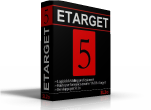










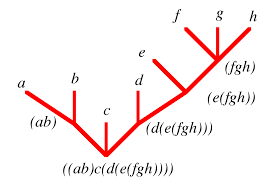


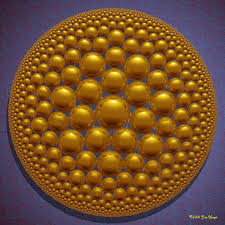
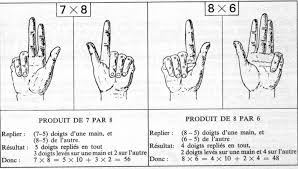


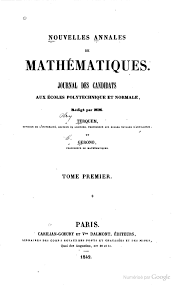

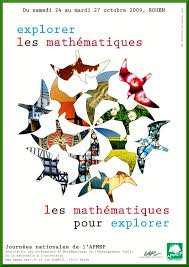



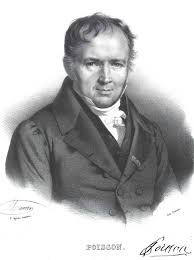

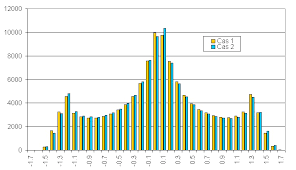
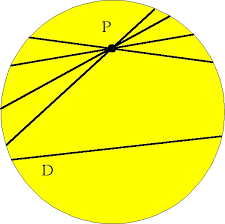


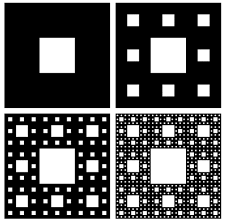
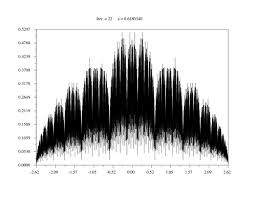
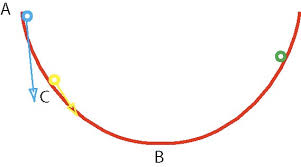

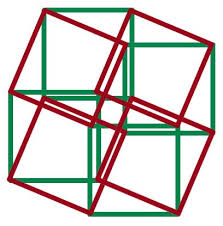



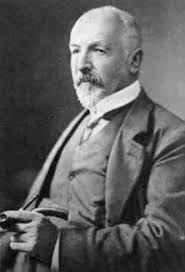

Les commentaires sont fermés.